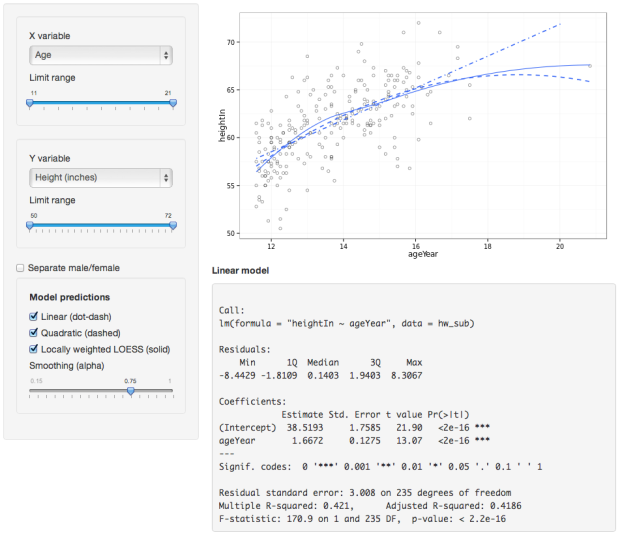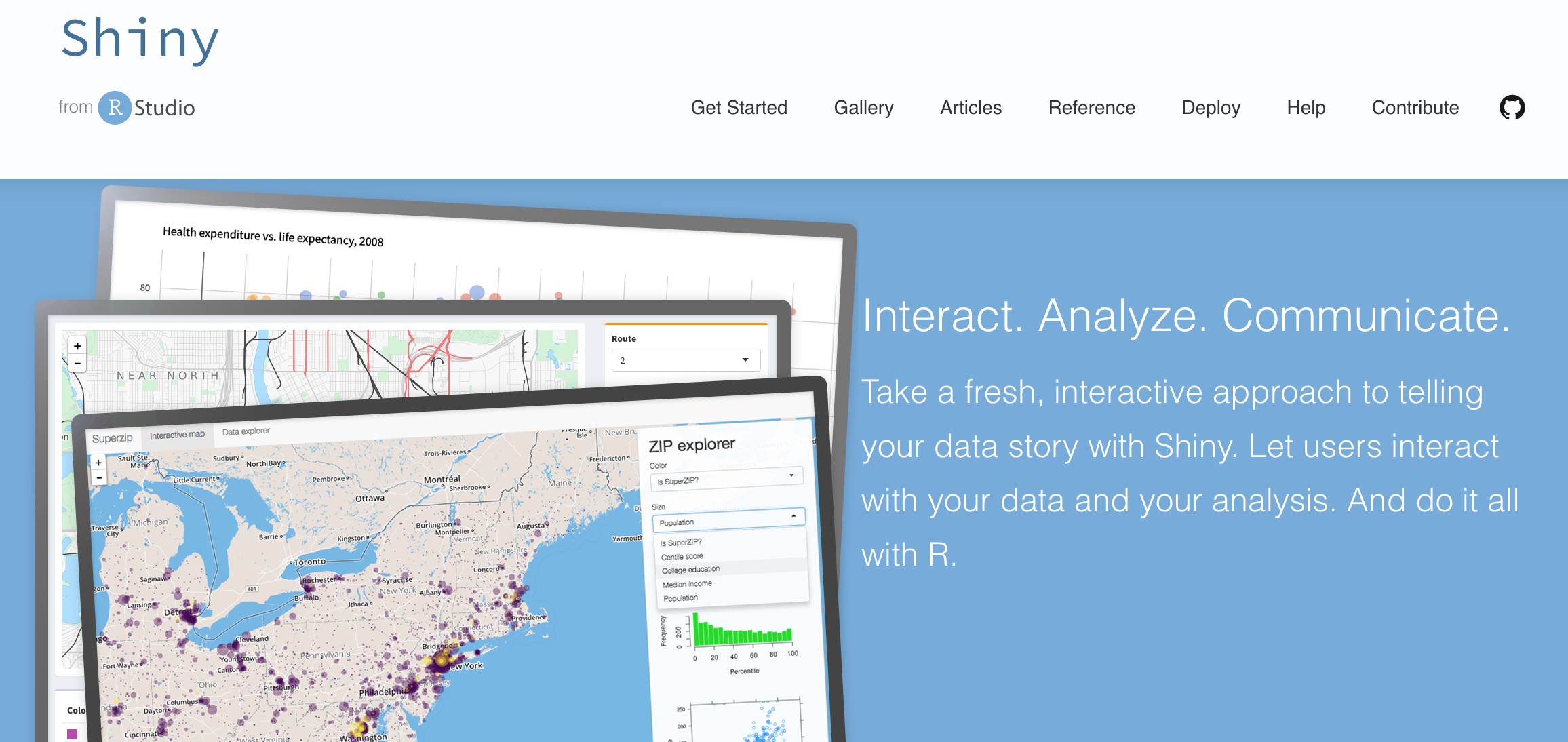
 ^ a b c d Kasprzak, Peter Mitchell, Lachlan Kravchuk, Olena Timmins, Andy (2020). Technology Innovations in Statistics Education. "Web Application Teaching Tools for Statistics Using R and Shiny". ^ Doi, Jimmy Potter, Gail Wong, Jimmy Alcaraz, Irvin Chi, Peter (2016). ^ "Shiny: Web Application Framework for R". Hosting a Shiny app on an RStudio server is free up to certain limits. The other is designed to accommodate the server computations and plot generating code, for which all the built-in facilities of R are available. One is designed to accommodate the user interface, the appearance of which is restricted by the default choices, though can be extended through various other R packages. There are two main parts to a Shiny file, which may alternatively be stored in two separate files. The input variables are evaluated via a user interface which allows the simple creation of widgets such as text boxes, radio buttons, and drop-down lists. Shiny creates a reactive context wherein the user specifies, through input variables, the circumstances under which computations are re-executed, or graphs (often visualizations) re-rendered this occurs almost instantaneously. program code does not run on the server, reducing server load to just serving the code itself). There is also Shinylive, for the Python version (only, at least for now), that allows running shiny on the client (i.e. both will be developed concurrently and may never have all the features of each other. Ī separate implementation Shiny for Python, is already available as alpha software, and while the goal is the same, it uses Python syntax (and semantics) so it's not fully compatible. One of the uses of Shiny has been in fast prototyping.
^ a b c d Kasprzak, Peter Mitchell, Lachlan Kravchuk, Olena Timmins, Andy (2020). Technology Innovations in Statistics Education. "Web Application Teaching Tools for Statistics Using R and Shiny". ^ Doi, Jimmy Potter, Gail Wong, Jimmy Alcaraz, Irvin Chi, Peter (2016). ^ "Shiny: Web Application Framework for R". Hosting a Shiny app on an RStudio server is free up to certain limits. The other is designed to accommodate the server computations and plot generating code, for which all the built-in facilities of R are available. One is designed to accommodate the user interface, the appearance of which is restricted by the default choices, though can be extended through various other R packages. There are two main parts to a Shiny file, which may alternatively be stored in two separate files. The input variables are evaluated via a user interface which allows the simple creation of widgets such as text boxes, radio buttons, and drop-down lists. Shiny creates a reactive context wherein the user specifies, through input variables, the circumstances under which computations are re-executed, or graphs (often visualizations) re-rendered this occurs almost instantaneously. program code does not run on the server, reducing server load to just serving the code itself). There is also Shinylive, for the Python version (only, at least for now), that allows running shiny on the client (i.e. both will be developed concurrently and may never have all the features of each other. Ī separate implementation Shiny for Python, is already available as alpha software, and while the goal is the same, it uses Python syntax (and semantics) so it's not fully compatible. One of the uses of Shiny has been in fast prototyping. 
It was announced by Joe Cheng, CTO of RStudio, in 2012.

Shiny is a free and open source R package for developing web applications (apps).










